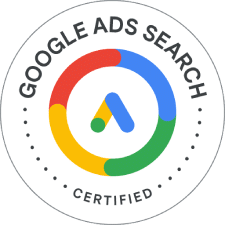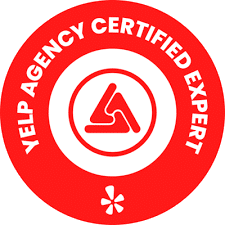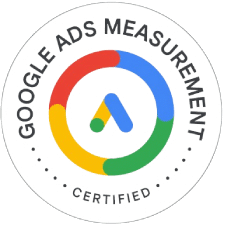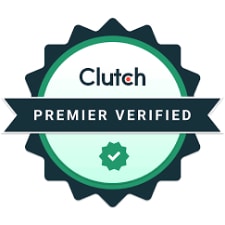How to Convert Leads to Customers?
The primary goal of any website owner is to generate organic traffic. But, you are wrong if you think traffic translates into success.
So, you built a website, optimized it for search engines, and generated a large volume of traffic. Your visitors are taking action on your website. Now, what? Bringing people to your website is one thing and converting them into your customers is another.
The process is called “lead conversion.”
Your customers visited your website and showed interest in your products and services. But, that doesn’t mean anything for your business until they hit the “Buy” button or “Call” for your service and turn into your regular customers. That’s your end goal! So, let’s see how to convert a lead in sales naturally.
What is Lead Conversion?
In the case of a regular eCommerce website, when your prospect visits your website and shows interest in buying something, they are called leads. A lead has to pass each sale funnel stage to become your customer. Brands are supposed to nurture their leads at every stage of the sales funnel so that the lead turns into their regular customer.
Each business follows a unique process of converting its customers into leads. They tailor the lead conversion plan to their customers’ requirements. But, here are a few strategies that work for nearly all businesses. Let’s take a look:
Research Your Target Audience
It may sound a no-brainer, but inadequate research on the audience is still one of the common mistakes of online businesses. You build a product or offer a service that solves customers’ pain points. So, there’s no point in marketing these products or services to people who aren’t interested in buying them in the first place.
Your target is people looking for your products and services. Research your target audience, identify their pain points, understand what they are looking for, and build a solid marketing strategy that aligns with their goals.
The research will also give you a clear picture of where your leads are and which channels they prefer. If a vast majority of your audience uses social media to find your products, you must optimize your social media channels for your audience.
People’s priority should be identifying the reasons why your prospects visit your website. What problems are they trying to fix? And, how can your products/services help them? Once you know what your prospects are looking for, it will be easier to craft a marketing strategy.
Identify the Qualified Leads
A website may receive thousands of prospects a day. These prospects can be classified into qualified and unqualified leads. Now, your website also receives visitors that only check your blogs without any intention to make a purchase.
You need to attract prospects who are likely to visit the pricing or purchase page.
Sending unqualified leads to your marketing team is nothing but a waste of time. The question is, “how do you identify whether the prospect is just there to read your content or they are interested in buying from you”?
Understand the high-intent and low-intent behaviors in your leads.
How do they interact with your sales team? What problems are they facing? What products they are looking for? What’s their budget? The answers to these questions will help you determine the possibility of your lead converting into your customers.
Build Two-way Conversation
Your job isn’t done at bringing your visitors to your website. As mentioned earlier, converting your prospects into your leads is a comprehensive strategy. It takes a few seconds for your website visitors to abandon a website.
Your prospects need a personalized shopping experience. They need to be guided through the sales funnel page so that they find it easier to complete the purchase. You need to engage with your prospects, interact with them, and help them with navigation. A two-way interaction doesn’t only give a personalized experience to your audience, but it’s a smart strategy to learn about your prospects.

Behavior Automation
It has become the latest trend in the eCommerce industry. Suppose a lead visits your websites and checks the customer review and testimonial sections to get a better picture of your product. This shows that your lead is interested in buying from you.
So, why not make this process a little less complicated by sending a follow-up email? This email can be about showing a free demo of the products or services to your prospect or a free trial.
Emails based on your customers’ behavior tend to perform better than casual emails. For example, when a lead inquires about your products, checks reviews, and schedules a demo, these are the signs they are interested in your products and services.
Build a Solid Email Marketing Strategy
Another way to nurture your leads is by email. Not the random email that informs your audience about the latest offerings or deals, but it should be a customized email that piques your lead’s interest. The goal is to get them to click on the “buy URL” and complete their purchase process.
These tips work for businesses attracting their target audience through email marketing:
- Personalized emails starting with the name of the prospect
- Use an automation tool to send a follow-up email when your lead takes an action on your website
You need to use the information you’ve collected about your leads and turn it into something valuable, informative, and engaging. Something that can draw the attention of your prospects and convince them to buy from you.
Use Social Proof
Social poof matters the most for your audience. Customers never buy products and services from any random company without conducting in-depth research on the product and checking customer reviews and testimonials for the same.
Think about the last purchase you made online. Chances are you must have made a purchase decision after reading customers’ reviews for the product.
Testimonials and reviews give your leads insights into your customer’s experience with your business. Social proof is quite useful when your leads are deciding on whether they should buy the product.
According to Robert Cialdini (Author of book Influence). Social proof is a phenomenon that was also called informational social influence, and essentially it’s the idea that people will be following and copying the actions of others in an attempt to emulate the behavior in certain situations.
Positive customer reviews can have a big impact on your customers’ buying decisions. It works like word-of-mouth marketing.
Retarget Your Leads
Many prospects abandon the “checkout page” either because it’s too long or they are not ready to make the purchase yet. People add products to their cart but never buy them. For the majority of them, all they need is a follow-up email that reminds them of the product they should purchase.
Retargeting your audience is the best way to present new offers that might interest them or the existing ones that align with their requirements.
It is also a great way to convert your leads into qualified leads, as people are likely to follow the instructions on email for completing their purchase.
Evaluate Your Lead Conversion Path
The conversion path you implemented a few years ago might not work today. As mentioned before, you should have “lead-focused” marketing strategies. Their interests, goals, and requirements change over time.
Lead conversion is not a cakewalk. You can’t build one strategy and count on it for generating results for years. With Google changing its ranking algorithm every few months, your customers’ goals also change. They want a more flexible and seamless sales to funnel process. Ideally, your website should have a short and easy-to-navigate lead conversion path. It should align with your audiences’ buying goals.
Don’t Make Them Wait
Your target audience has plenty of options when it comes to online purchases. It doesn’t take the time to leave your page and buy from your competitors instead. This happens mostly when you make your leads wait.
Contact them as soon as they show interest in your products. For example, you should send them a follow-up email immediately after they have inquired about your products and services. That’s because their interest in your services drops drastically within 2-3 hours. Chances are they will forget they saw your page or liked a product. So, you should either call them immediately or send a message about instructions on how they can buy the product or how will the purchase benefit them in the long run.
Don’t Lose Hope
You have no clue how many customers you are losing to your competitors just because you give up on your leads. What usually happens is—your prospects show interest in your products, you send them a follow-up email with detailed instructions on how they can buy from your store, and they ignore it.
That’s normal! Not everyone interested in your products will buy them instantly. That, however, doesn’t change the fact that they are interested in your product. It only takes a little convincing to get your prospects to buy from you. You should suggest your products 7-8 times to your prospects before giving upon them.

Bottom Line
The above practices will not only guide your leads through the sales funnel but they are proven methods that have worked for many online businesses. These are the long-term strategies for generating qualified leads and converting them into your loyal customers. Remember that getting thousands of leads will not decide your success. It’s the lead to the customer conversion rate that expands your business. If you are looking to evaluate your digital marketing strategies, contact us at Search Engine Projects.













